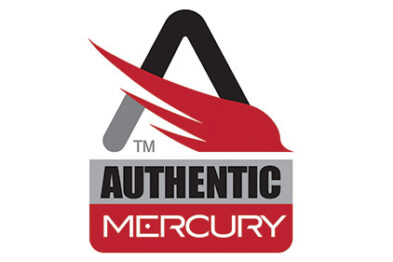Access control installation is one of the most important, yet least understood parts of physical security. From the card readers at your office’s entrance to the access control software working behind-the-scenes, the process of installing a new system involves many moving parts.
In this article, you will gain expert insight into necessary pre-installation planning, the components of an access control system and the installation process for commercial buildings and enterprises.
Before You Start: Define Your Goals
Before any installation can be done, it’s a good idea to define how you want your access control system to function.
Preparing a checklist of questions can help you arrive at an answer. These questions may include:
- How many sites will I need to equip?
- Which assets do I need to secure the most?
- Which doors will be included?
- Do I need remote access?
- Will my access control system integrate with other security platforms (e.g., visitor management, video surveillance systems, identity management, etc.)?
IT and security teams should also perform an audit of their physical security. Audits help establish a benchmark for your security and identify holes such as malfunctioning hardware and non-compliance. Audits will give you a sense of what is missing in your current access control system.
Defining your goals and performing a physical security audit will help you narrow down the wide array of available solutions and choose an optimal provider.
Finding the Right Installer
After selecting an access control provider, you will need to find the right installer and determine the cost. These aspects also come with many options, and although it may be tempting to choose the cheapest option, make sure to thoroughly vet the installer before signing an agreement.
Genea can help you find the right installer for the scope of your installation. Contact one of our representatives, available 24/7/365.
Know Your Access Control System: Basic Access Control Components
Once you’ve defined your security goals and chosen your access control provider, implementation can start. In order to understand the access control installation process, it’s helpful to know the components that make up a system.
Here are the components typically found in electronic access control systems:
Master Controller – This device hosts your local database, bridges your hardware to the cloud and controls who gets access based on the rules you create. These are sometimes referred to as control panels.
Credentials- A credential is the information used to verify a user’s identity. Access credentials can be stored in access tokens such as smartphones and key cards.
Interface Boards – These devices transport data from the reader to the master controller.
Reader – An access control reader reads your key card or phone’s credential and transmits the data to the master controller. The reader is placed outside the door, usually on a wall or pedestal.
Electronic locks – These can vary between maglocks, door strikes, electronic crash bars or many other types of hardware that keep your door locked.
Cables – These bridge and transmit data across all the access control system components. Cables also transmit electricity between the power supplies and the locks.
Power supply – Electronic access control systems require power to function. Your system’s power supply keeps the controllers, readers and locks functioning.
Door position switches – Otherwise known as door monitors, these devices tell you when a door is closed or open.
Motion Sensors/ REX Buttons – These devices allow you to exit a locked door by sensing motion or when someone hits the exit button.
Software – Access control software is the interface from which IT and security team monitor their system and add and remove access credentials.
Each of these individual components works to prevent unauthorized access to your facility. If you’d like a more in-depth look, read our blog or watch our webinar.
Access Control Devices and Types
Credentials, the forms of identification which store access permissions, come in a variety of types. The type is often closely considered when choosing an access control system. Traditionally, a standard lock and metal key were used. However, over time, key card access control systems and smartphone-based access control have replaced metal keys.
As technology evolves, mobile access control systems are becoming increasingly secure. Employees, users and system administrators find these systems to be convenient for numerous reasons. Users no longer need to carry a separate badge to access their building or office – everything gets done right from their smartphone. Mobile access control also helps IT teams distribute, activate and deactivate permissions more easily than key card systems.
Business owners and security teams should determine which access control system will complement their workforce the best. Consider if your employees are concerned with using a personal smartphone for business reasons, or if they would prefer to avoid carrying around a key card.
Visitor management integrations can also be effective for guests or if special events commonly take place at your office. Some visitor management integrations, like Genea, natively integrate with the access control system. QR codes can act as credentials and be sent to guests well before an event or meeting. Explore more of the various types of access control.
Access Control System Installation: The Process
The process of getting an access control system up and running can take a while. But with enough preparation, you can avoid setbacks during installation. An access control system installer’s process is:
Site inspection + data collection. Before any hardware goes in, professional access control installers will inspect the site in order to properly evaluate how the cables will be run.
Run the cables – During a full office build out, the first thing that needs to happen is to run the cables from the room where you will mount all the door controllers.
Install the locks. Next, a locksmith will install the electronic locks on all the doors that will be used to access the facility.
Connect the components. Once the cables are run and the locks are in place, a low-voltage technician can connect all the door components to the controllers and power supplies.
Setup + Testing. Once the hardware is installed, it’s time to program your system settings and test some keys. Once you’ve verified that everything is working correctly, you’re all set.
Cost Expectations for Your Security
Costs can vary widely based on the location of your facility. If you live in a city like New York or San Francisco, you can expect your costs to be about 25-50% higher for labor and components. Additionally, some security companies will charge for integrations with systems like video surveillance (e.g., Cisco Meraki, Rhombus Security, etc.) or identity management (e.g., Okta, Azure AD, etc.). Make sure to explore your options when determining the best access control system for you.
Download this information as a PDF for future reference. If you have additional questions, let us know how we can help.



